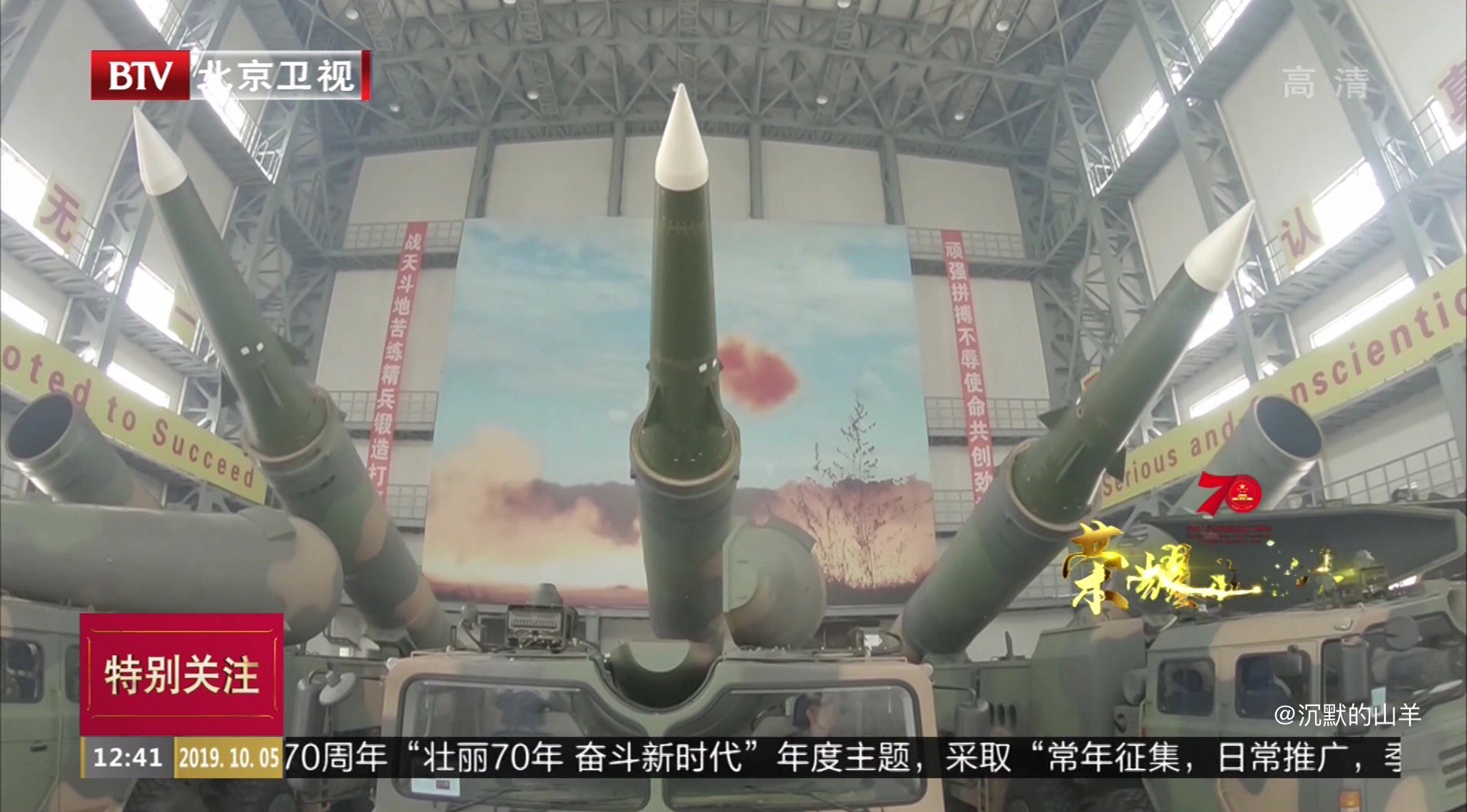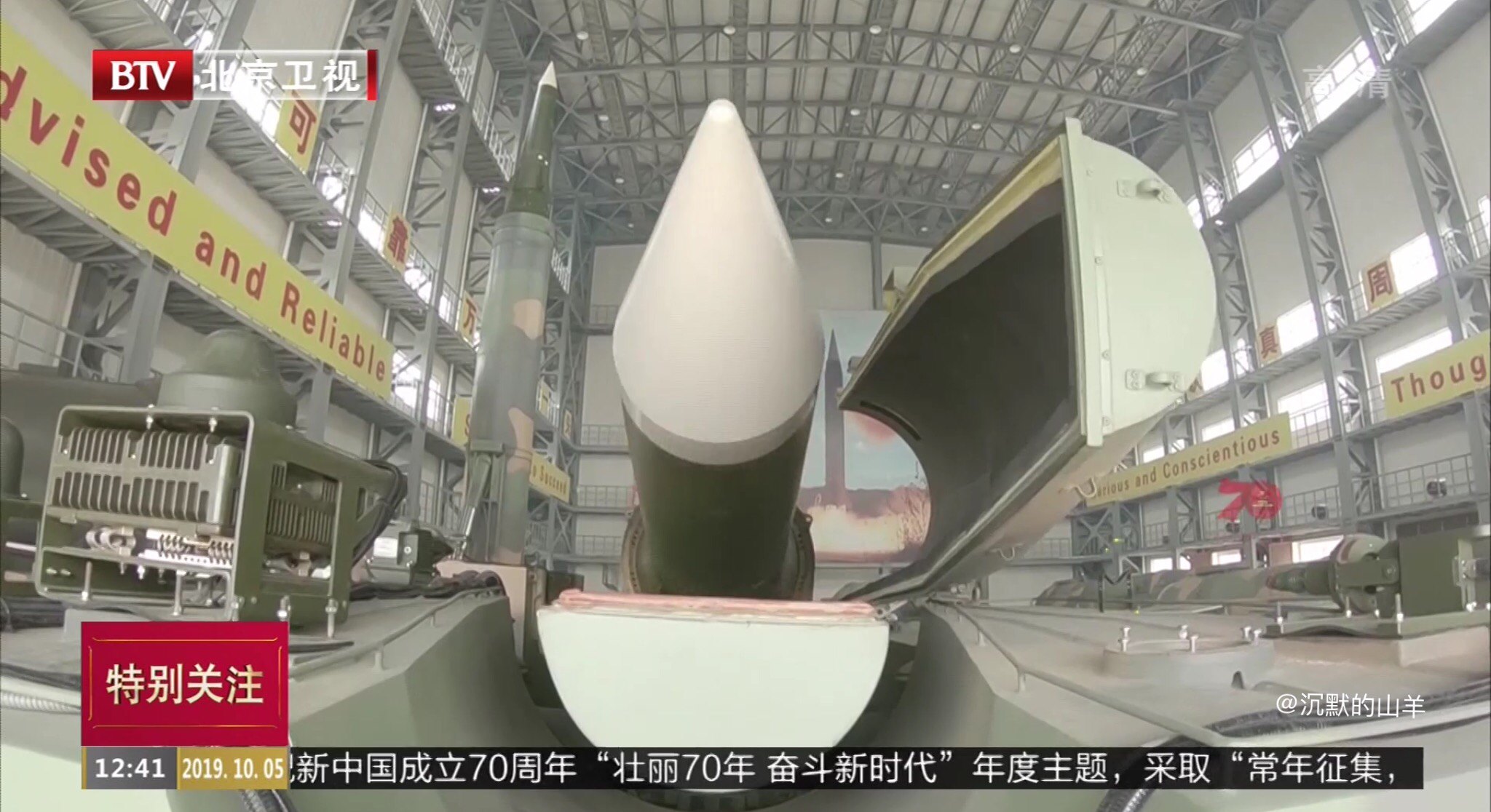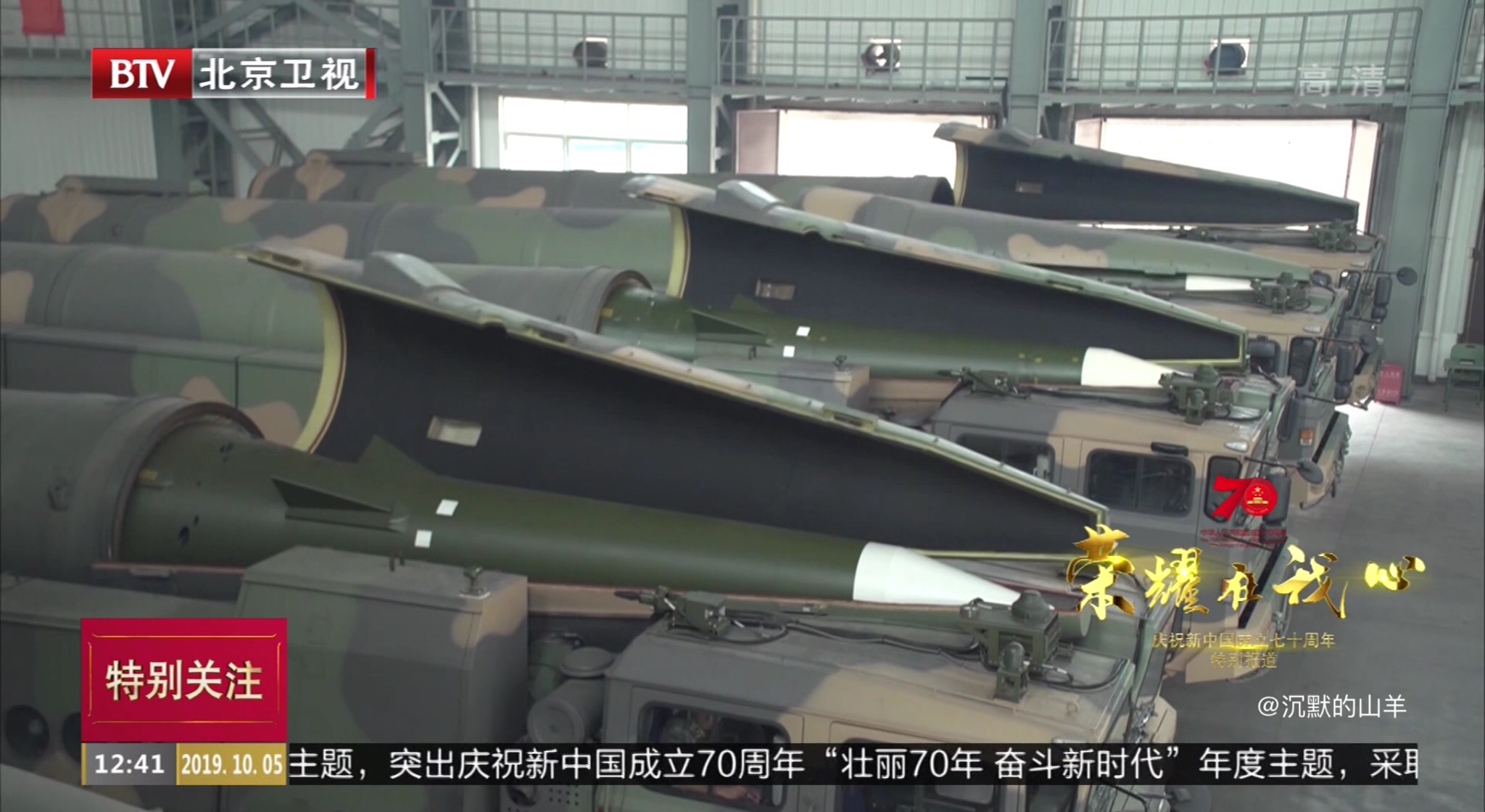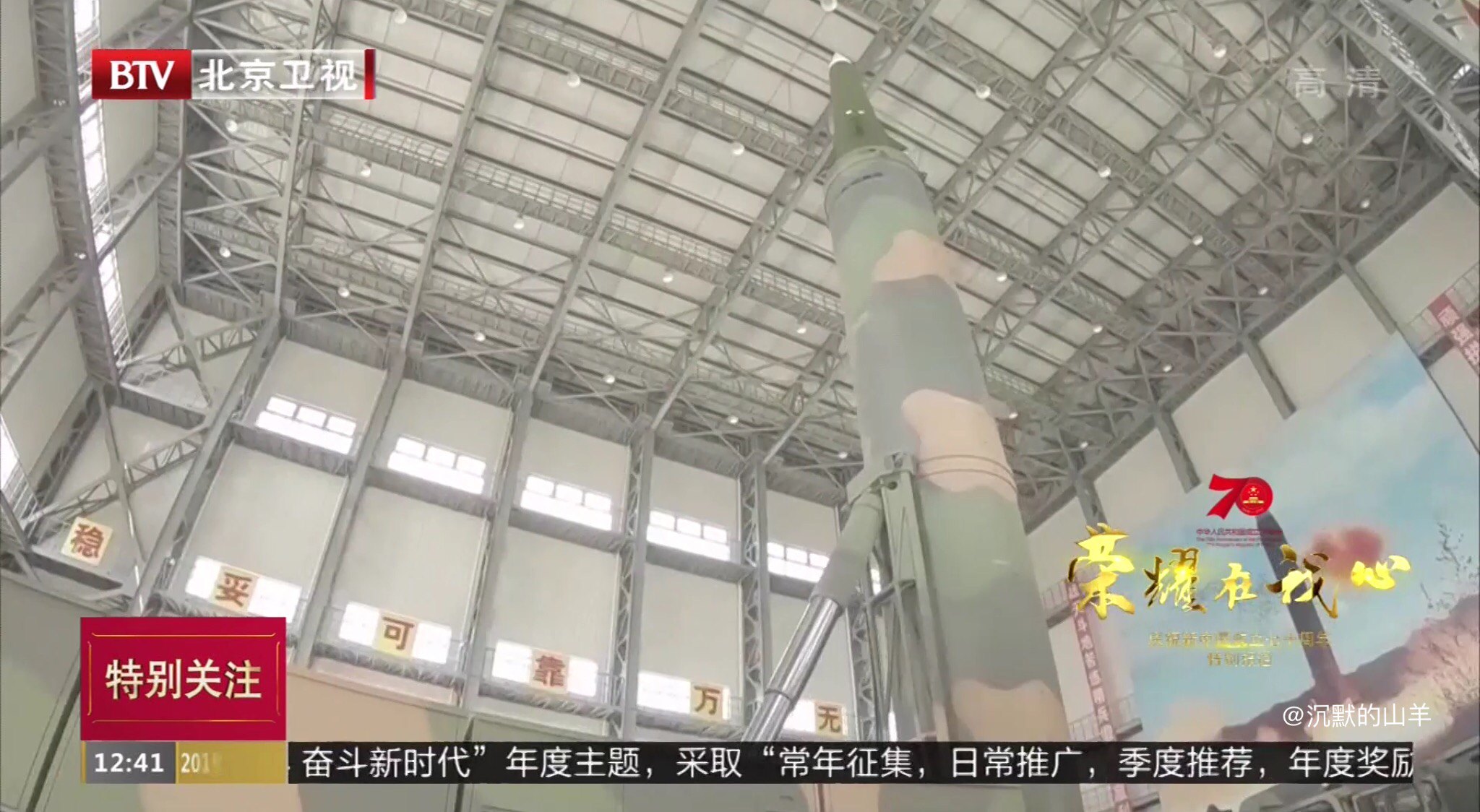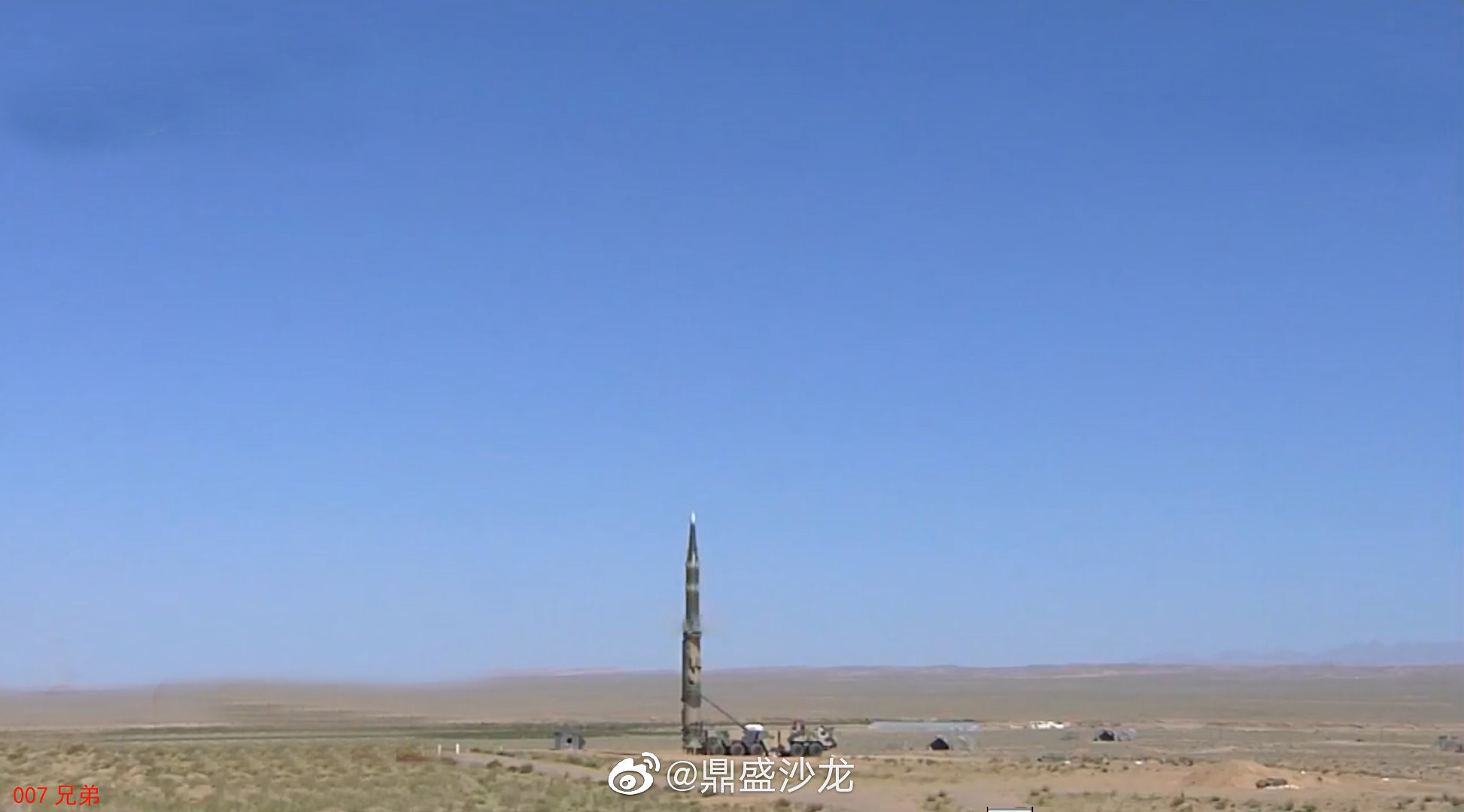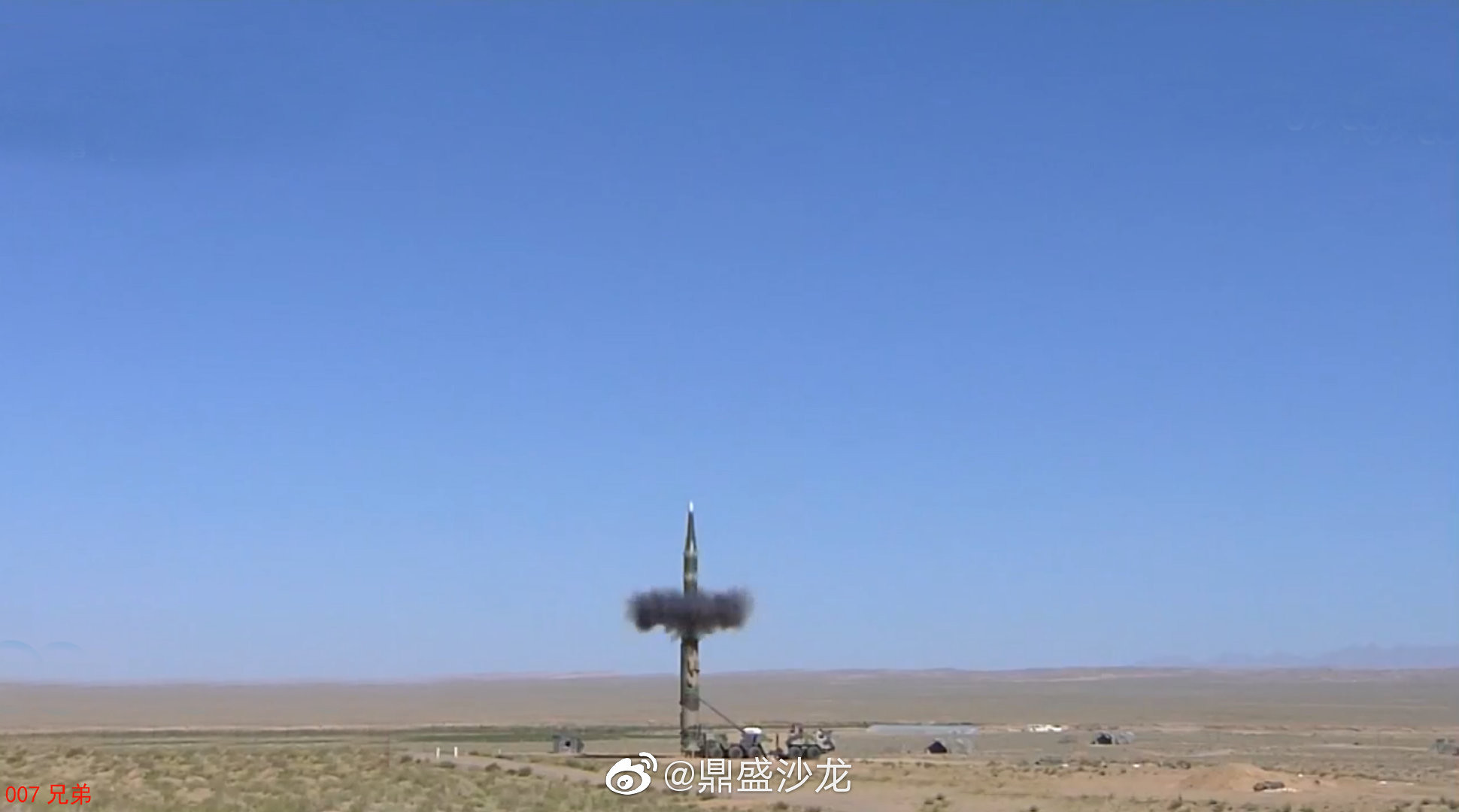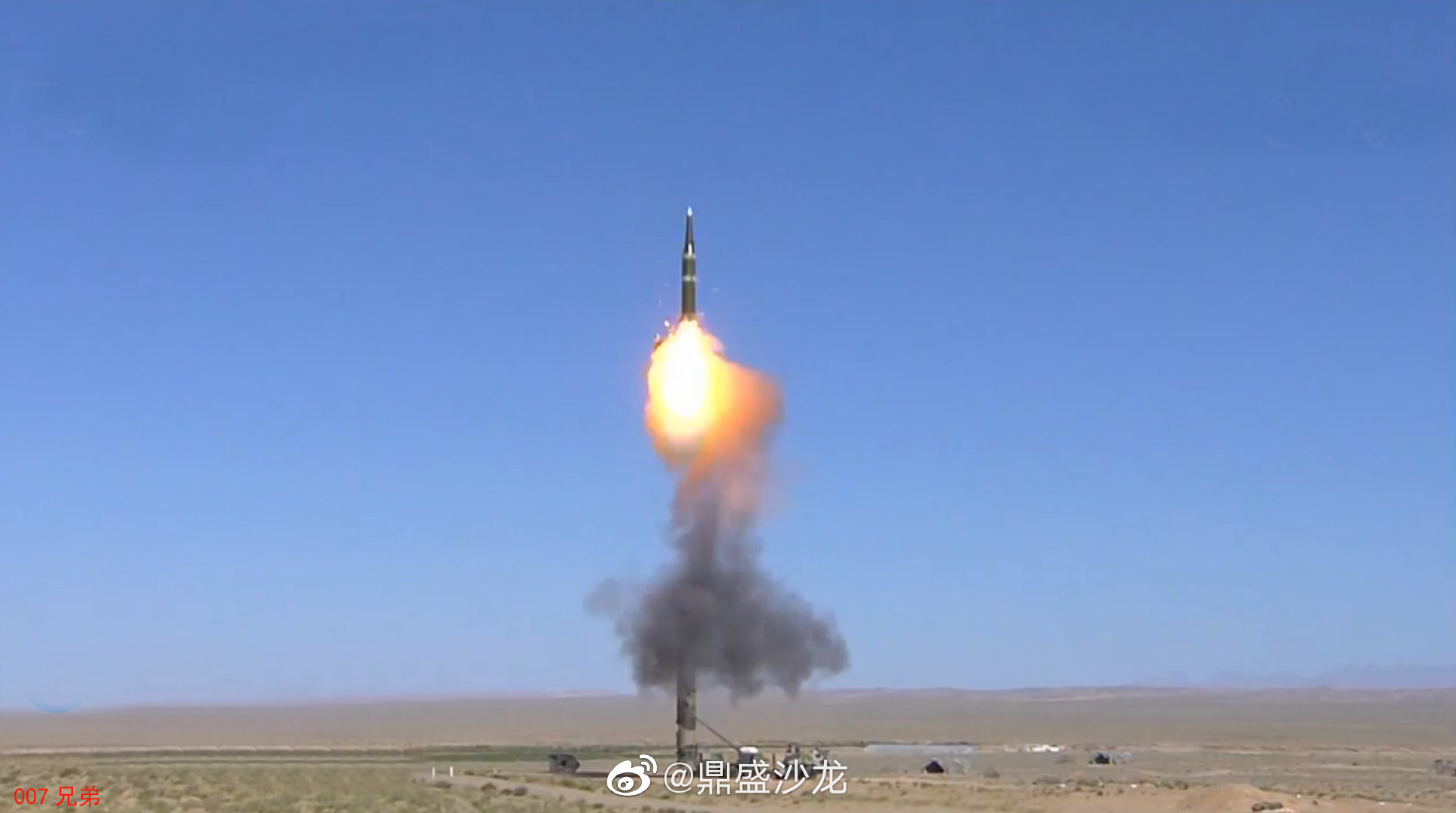You are using an out of date browser. It may not display this or other websites correctly.
You should upgrade or use an alternative browser.
You should upgrade or use an alternative browser.
China Ballistic Missiles and Nuclear Arms Thread
- Thread starter peace_lover
- Start date
- Status
- Not open for further replies.
how about the warhead cost? and also the TEL and other systems?
The question was just on the cost of the missile.
Otherwise we're getting into the Total Cost of Ownership.
When I previously looked at the TEL cost, I came up with a figure of approx $1M. That's negligible compared with a missile cost of $30M+ for a DF-41.
The warhead cost is the big unknown, but my gut also tells me that it isn't too high.
As by Jan 2017, Chinese media have reported the deployment of three brigades of DF-41 ICBMs. There is photographic evidence of a possible fourth brigade of DF-41 ICBMs on the Tibetan plateau. However, we have only counted the number of DF-41 ICBM TELs (ie. Transporter Erector Launcher), or 4 X 12 TELs
It is inefficient to fire only one ballistic missile per launcher. It is more logical to fire two ballistic missiles per launcher. This process is called re-loading. A DF-41 TEL can either be re-loaded with another DF-41 ICBM missile nearby or the DF-41 TEL can drive to a hidden re-supply location for another DF-41 ICBM.
Throw weight of DF-41 is 2,500 kg.
The DF-41 is a three-stage solid-fueled intercontinental ballistic missile reported to have a maximum range of up to 15,000 kilometers (more than 9320 miles) and a top speed of Mach 25 (19,030 mph). It is said to be capable of carrying up to 10 multiple independently targetable reentry vehicle (MIRVs). Its launch preparation time is estimated to be between 3 to 5 minutes.
This would make the DF-41 the world's longest range missile, surpassing the range of the US which has a reported range of 13,000 km. Throw weight of LGM-30 is only 1000kg or just 3 numbers of 170kton nukes. USA UGM-133 Trident II throw weight is only 2,800 kg.
If you accept that China has one re-load missile for each DF-41 TEL then the total number of Chinese DF-41 ICBMs has to be doubled.
Four brigades of DF-41 ICBMs (Heilongjiang, Henan, Xinjiang, and Tibet Provinces) with one re-load per DF-41 TEL yields 96 total DF-41 ICBMs.
How many brigades of DF-41 since 2017 number of 4 brigades?
6 Brigades or 8 Brigades?





There are 3 brigades of DF5Bs, or 3X12 DF5Bs, throw weight of 5,000 kgs
Might be even more now. And 2 years back, China completed all tests on DF5Cs. Even more powerful than DF5Bs
7 brigades of DF31As, mirving 3 nukes since 2005. I presume DF31AG is even more powerful and accurate.
The combined throw weight of Chinese nukes far exceed USA throw nukes.
China will not be the first to use the nuke.
If just 1 nuke hit China city or China armed forces, the bases of USA around the world in Europe and Diego Garcia and Singapore and Japan and USA herself will be turned into molten seas and lakes of multi color glass .
All the USA carriers that still remained will be taken out. Even if the carrier try to hide in Frisco Bay or Atlantic Ocean.
So please be peaceful and respectful and more courtesy, and no more phony FONOPs and playing games of who will blink with China with phony FONOPs.
Do not play with fire regarding Taiwan.
DO NOT THREATEN TO NUKE CHINA
I don't think the DF-31 or DF-41 have reloads.
Because if they did have to be fired, they could expect incoming counterbattery nukes which makes a second launch impossible.
Plus if you have TEL cost of $1M versus $30M for a missile + ? warhead costs, it simply doesn't make sense to skimp on the number of TELs.
There is a book "High speed long range precision strike flying craft design method and application" published by "National Defense Industry Press" in 2014.
There are multiple configurations, including "boost and glider"
In chapter "Glider reentry characteristics and application", it says:
In chapter dedicated to "ballistic reentry precision strike craft", it says that this kind of craft can be controlled and maneuvered with a smaller maneuvering range.
This may be related to DF-21D and DF-26.
All these crafts are terminal guided. The book's most volume is dedicated to the design and simulation of the control algorithm and optimizing the flying profile such as the booster cut-off timing, altitude, speed and warhead releasing timing, angle etc. all of them have great impact to the control algorithm and accuracy.
There are multiple configurations, including "boost and glider"
In chapter "Glider reentry characteristics and application", it says:
- The warhead is kinetic, no explosive.
- The warhead's operational requirement is:
- minimum terminal impact speed: 2000m/s
- release altitude being researched: xx00m/s to xx00m/s
- impact angle: -89 degrees (the glider's initial flying vector being 0 degree), this is almost vertical to the target.
- accuracy within 10 meters.
- The glider carries the warhead and release it at xx km altitude xx km distant (horizontal implied by the number) to the target.
In chapter dedicated to "ballistic reentry precision strike craft", it says that this kind of craft can be controlled and maneuvered with a smaller maneuvering range.
This may be related to DF-21D and DF-26.
All these crafts are terminal guided. The book's most volume is dedicated to the design and simulation of the control algorithm and optimizing the flying profile such as the booster cut-off timing, altitude, speed and warhead releasing timing, angle etc. all of them have great impact to the control algorithm and accuracy.
I don't think the DF-31 or DF-41 have reloads.
Because if they did have to be fired, they could expect incoming counterbattery nukes which makes a second launch impossible.
Plus if you have TEL cost of $1M versus $30M for a missile + ? warhead costs, it simply doesn't make sense to skimp on the number of TELs.
OK.
But still enough throw weight of nukes even without reloads to make 'Muricans back off.
And if they do not, and fired that nuke once their carriers are turned into burning hulks , they be turned into seas and lakes of molten multicolored glass.
And tardigrades will be the final remaining sentiences after the rats and cockroaches die off as well.
That seems like an overly complicated launch... I mean why one big booster and 4 small boosters? Why bother with ejectable nose cone? That said I have no better alternatives...
This would make the DF-41 the world's longest range missile, surpassing the range of the US which has a reported range of 13,000 km. Throw weight of LGM-30 is only 1000kg or just 3 numbers of 170kton nukes. USA UGM-133 Trident II throw weight is only 2,800 kg.
What's with this "the most this and that" talk? But if you insist on this "the most" part, the Russian R-36M2 is no doubt, the record holder here as its almost twice as heavy as DF-41 with an enormous payload capacity and 16,000 km range, which makes it the king of the ICBMs at the moment. RS-28 might challenge its position in future though.
It is inefficient to fire only one ballistic missile per launcher. It is more logical to fire two ballistic missiles per launcher. This process is called re-loading. A DF-41 TEL can either be re-loaded with another DF-41 ICBM missile nearby or the DF-41 TEL can drive to a hidden re-supply location for another DF-41 ICBM.
There is no such thing as re-loading a road-mobile ICBM. It's against the principle and practice since the TEL has to evade any kind of infrastructure in times of conflict in order to avoid enemy recce assets. I suggest you watch the Russian practices with their RS-12M & RS-24. This way, you can better understand why reloading isn't an option. Not to mention to how narrow is the launch envelope. Plus, making a TEL is the easiest and the cheapest part while deploying those warheads is the real money taker.
The combined throw weight of Chinese nukes far exceed USA throw nukes.
Nope, it doesn't. Check the NEW START Treaty numbers.
What's with this "the most this and that" talk? But if you insist on this "the most" part, the Russian R-36M2 is no doubt, the record holder here as its almost twice as heavy as DF-41 with an enormous payload capacity and 16,000 km range, which makes it the king of the ICBMs at the moment. RS-28 might challenge its position in future though.
You wrong.
Dont take my word.
Russia’s RS-28 “Sarmat” ten-ton payload liquid-fueled intercontinental ballistic missile (ICBM) will be the world’s largest nuclear strike missile when it enters production, as early as 2021. Reportedly it may carry up to fifteen 350 kiloton warheads, or up to twenty-four of the new “Avangard” nuclear-armed Hypersonic Glide Vehicle (HGV) warheads.
But since mid–2017, Chinese sources have revealed details of an even larger twenty-ton payload solid-fuel space-launch vehicle (SLV) that could form the basis for what might become the world’s largest “mobile” ICBM.
In May 2017, the now closed Chinese website ChinaSpaceFlight.com offered the first depiction of the family of solid-fuel SLVs to be offered by the China Aerospace Science and Industry Corporation (CASIC). Seen in this image for the first time was the twenty-ton payload Kuaizhou-21, or KZ-21, and the KZ-21A, which adds two side boosters.
- Status
- Not open for further replies.

